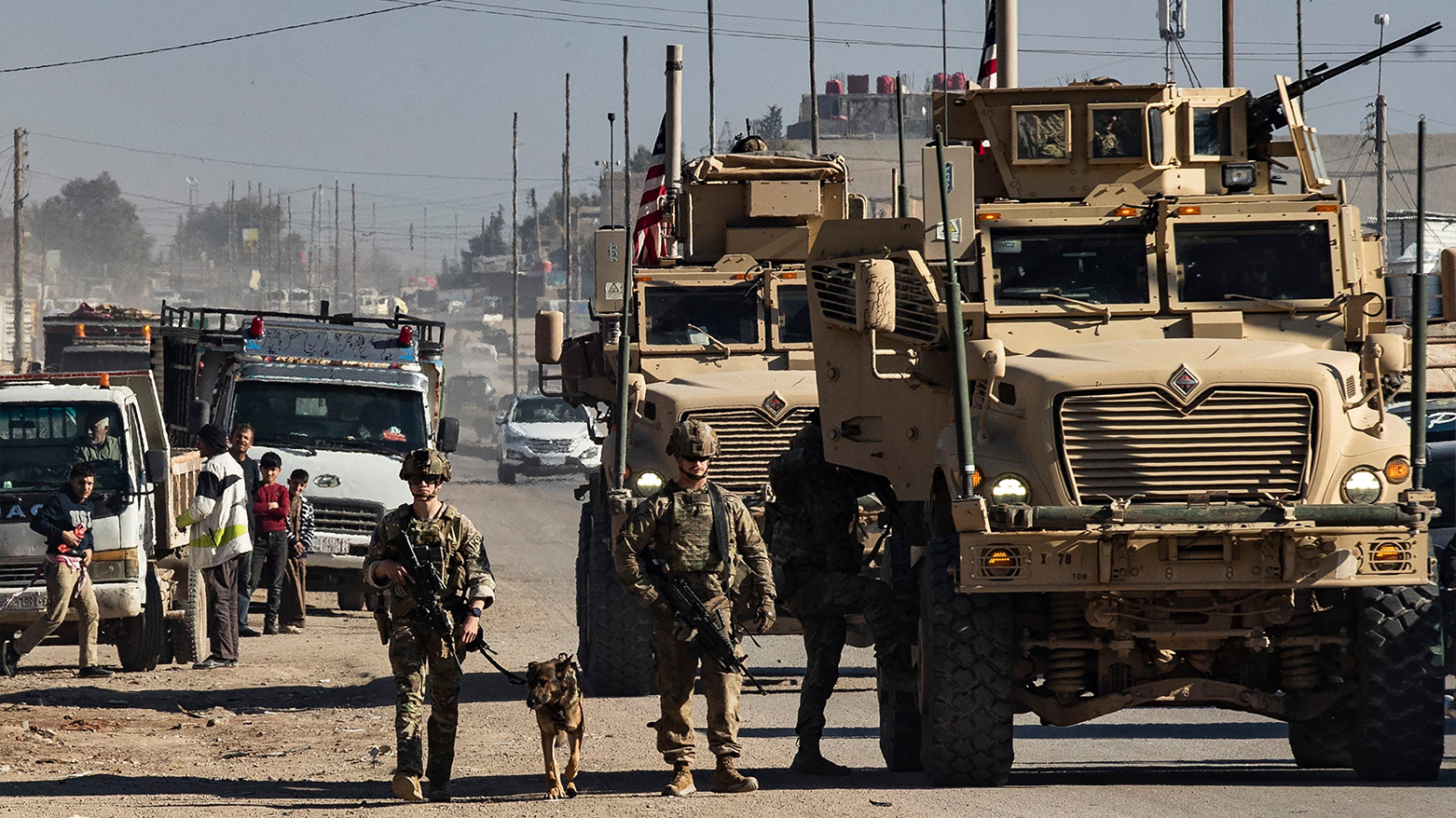U.S.-Led Coalition Ramps Up Military Reinforcements in Rojava
Washington's continued military presence in Syria highlights its strategic commitment amid regional threats and ongoing jihadist activities.

Jan. 31, 2025
Erbil (Kurdistan24) – January 2025 saw a noteworthy intensification in military activity by the U.S.-led coalition in Rojava (northeast Syria), as reinforcements continued to pour into the region.
The continued deployment of military assets and personnel underlines Washington’s prolonged strategic presence in Syria, especially in the face of persistent regional threats and the ongoing activities of jihadist groups.
Massive Military Reinforcements by Air and Land
According to the UK-based Syrian Observatory for Human Rights (SOHR), the coalition deployed a considerable number of reinforcements throughout January, including both aerial and ground shipments.
197 trucks carrying military and logistical supplies entered Syria from Iraq’s Kurdistan Region, arriving at coalition bases in Deir ez-Zor and Hasakah.
Read More: US military convoy enters Syria from Kurdistan Region, reinforcing bases in al-Hasakah
The UK-based Observatory also indicated that 22 cargo aircraft loaded with weapons, advanced military equipment, and troops landed at coalition bases, mainly in Hasakah province, including the strategic Kharab al-Jir and al-Shaddadi bases.
Multiple shipments contained pre-fabricated structures, surveillance equipment, armored vehicles, fuel tankers, and specialized engineering machinery for fortification.
These reinforcements specify a continued U.S. commitment to stabilizing the region while thwarting possible threats posed by both extremist groups and other hostile regional actors.
Joint Military Drills with Syrian Democratic Forces (SDF)
Throughout January, the coalition increased military cooperation with the Syrian Democratic Forces (SDF), carrying out joint training exercises intended to enhance operational readiness.
According to SOHR, live-fire drills were conducted on Jan. 15 at the Conoco Gas Field Base in Deir ez-Zor, simulating battlefield scenarios against jihadist insurgencies.
The same day, coalition and SDF forces held nighttime exercises in Qasrak, western Hasakah, utilizing helicopters and artillery fire.
These exercises serve to strengthen the fight capabilities of SDF units while indicating the coalition’s readiness to respond to emerging threats.
Read More: ‘US Must Continue Supporting SDF in the Fight Against ISIS’ Marco Rubio
Escalating Threats Against U.S. Bases in Syria
Despite these efforts, attacks targeting U.S. military installations have persisted.
On Jan. 2, SOHR reported, that coalition air defenses intercepted an armed drone trying to strike the Kharab al-Jir base in Rmelan. The same day, heightened security measures were observed at Al-Omar Oil Field Base, where flares were fired to deter potential threats.
Targeting Jihadist Leaders
According to the SOHR, the coalition’s counterterrorism operations resulted in the elimination of at least eight high-profile jihadist figures in January. Notable among them were:
Mohammad al-Jad’ou, an ISIS commander, was killed by a drone strike in Raqqa’s Rasafa desert on Jan. 10.
Mohammad Ibrahim al-Dhiban, a former ISIS and Jund al-Aqsa operative, was eliminated in a drone strike in Idlib on Jan. 15.
Muhammad Salah al-Za’bir, a senior figure in Hurras al-Din, was killed by a “precision airstrike in Northwest Syria”.
Read More: CENTCOM Kills Leading Figure in ‘Al-Qaida Affiliate’ in Syria
Read More: France conducts first airstrikes against ISIS in Syria since Assad regime change
Resource Control and Geopolitical Implications
Beyond counterterrorism, the continued U.S. presence in Syria is entwined with geopolitical and economic interests.
The coalition keeps control over key oil and gas fields, a point of dispute among local factions and international actors.
The intensification of coalition operations in northeast Syria reflects a broader U.S. strategy to strengthen its position in the region.
With constant military engagements against jihadist cells, defensive measures against aggressive attacks, and sustained logistical build-up, the coalition’s long-term presence seems firmly established.
However, balancing security objectives with regional stability remains an intricate challenge, especially in an environment where geopolitical rivalries and local grievances continue to shape the landscape.